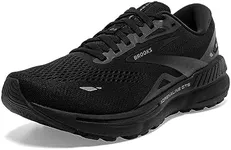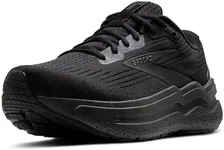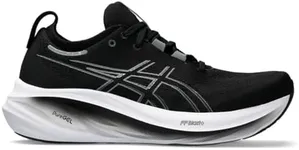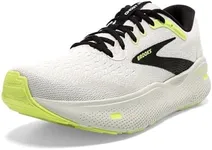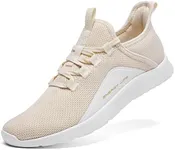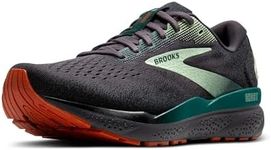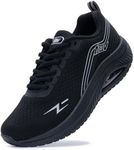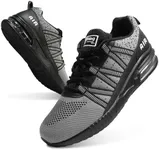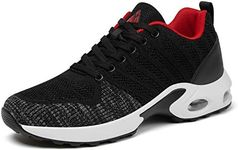Buying Guide for the Best Cushioned Running Shoes
Choosing the right cushioned running shoes is essential for comfort, performance, and injury prevention. The right pair will depend on your running style, foot shape, and the type of terrain you typically run on. Here are some key specifications to consider when selecting cushioned running shoes, along with explanations to help you make an informed decision.Cushioning LevelCushioning refers to the amount of padding in the shoe, which impacts comfort and shock absorption. This is important because it can reduce the impact on your joints and muscles. Cushioning levels can range from minimal to maximum. Minimal cushioning is lighter and offers more ground feel, suitable for runners who prefer a more natural running experience. Moderate cushioning provides a balance of comfort and responsiveness, ideal for most runners. Maximum cushioning offers the most shock absorption and is best for long-distance runners or those with joint issues. Choose based on your comfort preference and running distance.
Arch SupportArch support is the level of support provided to the arch of your foot. This is crucial for maintaining proper alignment and preventing injuries. There are three main types: neutral, stability, and motion control. Neutral shoes are for runners with normal arches and provide balanced support. Stability shoes offer extra support for runners with mild to moderate overpronation (when the foot rolls inward). Motion control shoes provide the most support and are designed for severe overpronation. Determine your arch type and pronation to select the right level of support.
Heel-to-Toe DropThe heel-to-toe drop is the difference in height between the heel and the forefoot of the shoe. This affects your running form and can influence comfort and performance. A higher drop (8-12mm) provides more heel cushioning and is suitable for heel strikers. A lower drop (0-4mm) promotes a more natural running gait and is preferred by midfoot or forefoot strikers. A medium drop (4-8mm) offers a balance and can be a good starting point for most runners. Consider your running style and comfort when choosing the drop.
Fit and SizeThe fit and size of the shoe are critical for comfort and performance. A well-fitting shoe should have enough room in the toe box to wiggle your toes, a snug fit around the midfoot, and a secure heel. Shoes that are too tight can cause blisters and discomfort, while shoes that are too loose can lead to instability. It's important to try on shoes at the end of the day when your feet are slightly swollen and to wear the socks you plan to run in. Ensure there is about a thumb's width of space between your longest toe and the end of the shoe.
WeightThe weight of the shoe can affect your running efficiency and speed. Lighter shoes are generally preferred for racing and speed work as they require less energy to lift. Heavier shoes often provide more cushioning and durability, making them suitable for long-distance running and training. Consider the type of running you do most often and your personal preference for shoe weight.
DurabilityDurability refers to how long the shoes will last before they need to be replaced. This is influenced by the materials used in the upper, midsole, and outsole. Durable shoes are typically made with high-quality materials that can withstand regular use and various terrains. If you run frequently or on rough surfaces, look for shoes with reinforced areas and robust construction. Assess your running habits and the environments you run in to determine the level of durability you need.
BreathabilityBreathability is the shoe's ability to allow air to circulate, keeping your feet cool and dry. This is important for comfort, especially during long runs or in hot weather. Shoes with mesh uppers or ventilation features offer better breathability. If you tend to run in warm climates or have sweaty feet, prioritize shoes with good ventilation to prevent overheating and blisters.
